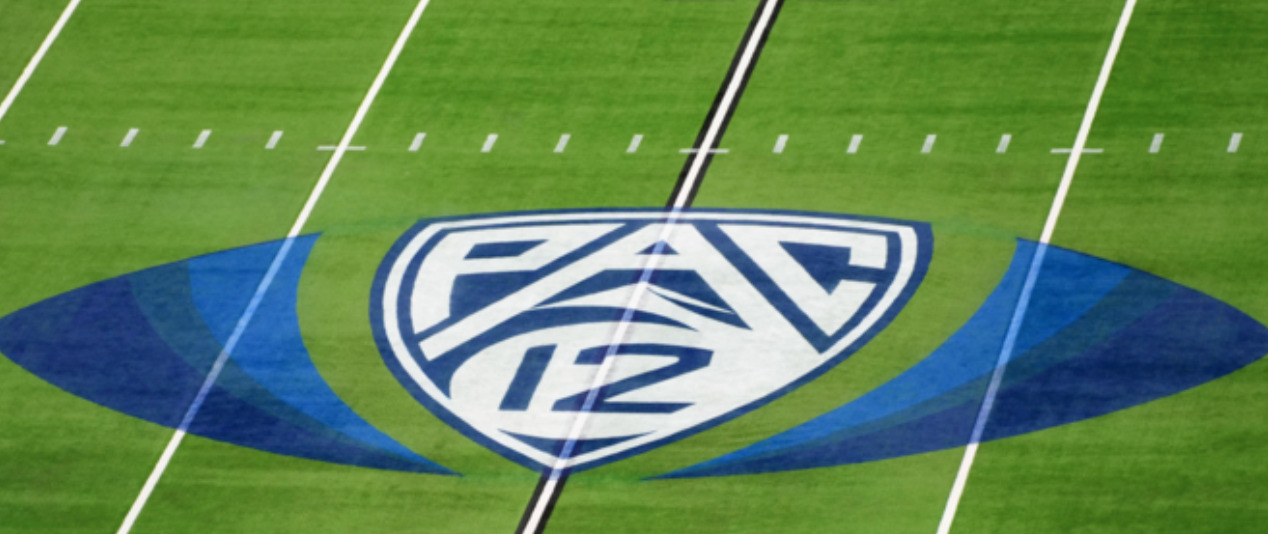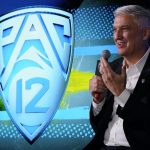The Pac-12’s search for an eighth school will continue after UNLV decided on Wednesday night to remain in the Mountain West.
The two-team conference grew to six earlier this month with the additions of Boise State, Colorado State, Fresno State and San Diego State, then added a seventh this week, Utah State.
It needs one more full-time member by the summer of 2026 in order to meet NCAA requirements.
Our reaction to the development and views on where the Pac-12 should turn next:
— The Rebels became the fourth school to reject a membership offer this week, following Memphis, South Florida and Tulane, which opted to stay put in the American Athletic Conference.
It’s a terrible decision for UNLV’s athletic future.
The Rebels were paid approximately $25 million to remain in the Mountain West — we’ll get to that issue momentarily — but that cash will vanish quickly given the athletic department’s fragile fiscal situation.
Moving to the Pac-12 would have elevated UNLV’s competitive profile, resulting in more annual media revenue and enhanced community support for name, image and likeness efforts.
— Keeping UNLV and Air Force, which was pondering a jump to the American, qualifies as a victory for Mountain West commissioner Gloria Nevarez.
Nevarez was caught off-guard by the defection of the four schools earlier this month, and her work is not finished: The Mountain West also needs one more school to reach the NCAA threshold. But short-term survival is likely with commitments from the Rebels and Falcons.
(Whether the Mountain West lives into the 2030s depends on a slew of external factors.)
— The development isn’t crippling to the Pac-12 by any stretch, but it muddles the rebuilding process, makes the search look clunky and likely sparks a round of second-guessing: Why didn’t the conference simply offer the Rebels membership at the same time it pursued Boise State, Colorado State, Fresno State and San Diego State?
There are several reasons, with secrecy near the top of the list. UNLV’s governing board must approve any change in conference affiliation, meaning the Pac-12’s initial expansion wave would have become a public matter and thus jeopardized the move for the outbound quartet, according to a source.
— The cost of adding UNLV would have been exorbitant. Desperate to keep the Rebels and preserve her conference, Nevaraz offered UNLV and Air Force approximately $25 million (each) to stay. That figure is roughly five times their media value.
Pac-12 commissioner Teresa Gould could not have justified a $25 million outlay to her newest members, which are worth more than UNLV, or to Washington State and Oregon State.
Nevarez needed approval from the five schools left behind in the Mountain West (Hawaii, Nevada, New Mexico, San Jose State and Wyoming). Staring at the prospect of dissolution if the Rebels and Falcons bolted, those university presidents clearly felt the massive expense was worthwhile.
— The financial commitment carries some level of risk.
The Mountain West is counting on departure fees from the five schools headed to the Pac-12 that come from two buckets: $55 million from the so-called poaching penalty included in the 2024 scheduling agreement between the conferences; and roughly $90 million in exit fees outlined in the Mountain West bylaws.
However, the Pac-12 is challenging the legality of the poaching penalty, and the five departing schools assuredly will fight to reduce the exit fees. The Mountain West could emerge with $145 million to use as it pleases, or much less.
 — The Pac-12 has options for the eighth full-time member, with Texas State likely high on the list.
— The Pac-12 has options for the eighth full-time member, with Texas State likely high on the list.
Located in San Marcos, which is halfway between Austin and San Antonio, Texas State would expand the conference footprint into the Central Time Zone and offer vital recruiting access to a football-crazed state.
(The geography isn’t ideal for the rebuilt Pac-12, but it’s not like Washington and Rutgers are next-door neighbors.)
The Bobcats, who joined the Football Bowl Subdivision in 2012, arguably have more long-term competitive potential than UNLV.
— What’s next for the Pac-12?
There is no rush to find an eighth football-playing member; that step can be delayed for weeks, if not months, if necessary.
First, the conference needs to turn projected media revenue into guaranteed media revenue to the greatest extent possible.
Take the seven-school structure to executives at ESPN, Fox, Turner, Apple, The CW, CBS — and any other potential suitors — and get real numbers. Then use those numbers to find No. 8.
— Also, the conference should focus its expansion efforts on the biggest prize available: Gonzaga, which was on the Big 12’s radar for a period of time but now lacks a short-term pathway into the power conferences.
The Pac-12 has been engaged in membership discussions with Gonzaga for weeks. It’s unclear whether a formal offer has been made, but the financial piece is tricky.
It makes little sense to offer the Zags a full share of the Pac-12’s annual revenue because they don’t play football.
But a partial share (in the $6 million-to-$8 million range, for example) might not constitute a significant increase from the West Coast Conference media distributions.
If the Pac-12 finds a middle ground and lands the Zags, then its failed attempt to find an eighth football school would be instantly cast to the shadows.
And let’s not dismiss the potential for Gonzaga’s presence to unlock additional expansion opportunities.
*** Send suggestions, comments and tips (confidentiality guaranteed) to wilnerhotline@
*** Follow me on Twitter/X: @WilnerHotline
Related posts:

(AP Photo/Ralph Freso, File)
Wilner Hotline: Latest Pac-12 Bowl Projections
(AP Photo/Marcio Jose Sanchez)
Pac-12 survival: The downside risks, potential benefits and missing pieces within an Apple deal Mailbag: Stanford and Cal caught in ACC breakup(?), Big Ten revenue shares, the Pac-2 lawsuit, media decisions and more
Mailbag: Stanford and Cal caught in ACC breakup(?), Big Ten revenue shares, the Pac-2 lawsuit, media decisions and more

(AP Photo/Chris Coduto)
Wilner Hotline Pac-12 postseason awards: Our look at the front runners for individual honorsJon Wilner
Jon Wilner has been covering college sports for decades and is an AP top-25 football and basketball voter as well as a Heisman Trophy voter. He was named Beat Writer of the Year in 2013 by the Football Writers Association of America for his coverage of the Pac-12, won first place for feature writing in 2016 in the Associated Press Sports Editors writing contest and is a five-time APSE honoree.
